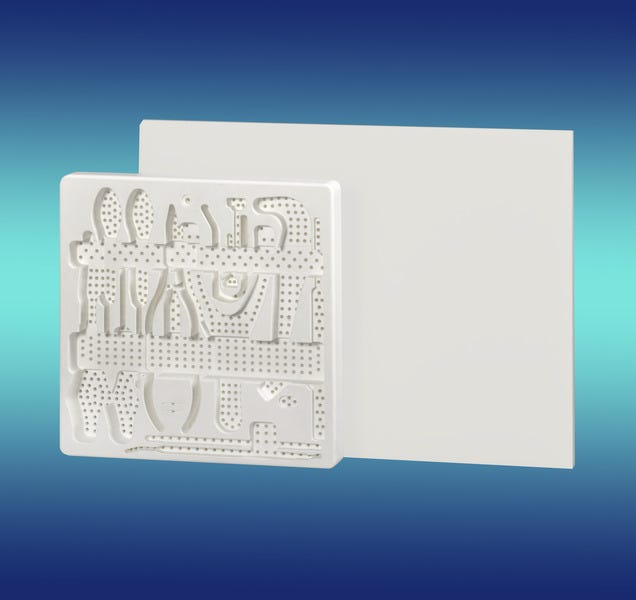June 12, 2012
Polypropylene is one of the materials moving to the front lines in the battle to find more cost effective and environmentally friendly medical applications.
Polypropylene (PP) is a semicrystalline polymer that contains amorphous and semicrystalline regions. It lacks the heat resistance and structural properties of polycarbonate, the impact resistance of polyester, the radiation resistance of polystyrene or polyethylene (PE), or the flexibility or soft feel of flexible polyvinyl chloride, but it has a good balance of those properties. It also has good chemical resistance, a large and innovative supply base and good economics.
|
PP plates target parts made from more expensive PPSU. |
In one interesting illustration of the trend, Quadrant (Lenzburg, Switzerland) is promoting parts fabricated from plates of Proteus LSG HS PP (heat-stabilized polypropylene) that can withstand repeated steam and autoclave sterilization cycles. The material has a deflection temperature (HDT) of over 149°C (> 300 °F) under 0,455 MPa load (66 psi).
It is described as highly resistant to cleaning agents, disinfectants and various solvents, making it suitable for surgical trays, caddies and instrument components used in various life science applications. Injection molding is a problem for complex designs when the only options are high-viscosity resins.
"Materials with excellent cost-performance ratio are the future in a more and more sensitive medical and life science Industry," says Stefan Willing, global market segment manager, Life Science Industry, at Quadrant. "In addition, proof of biocompatibility and controls are prerequisites for sustainable material qualifications."
The production process to produce Proteus plates includes a proprietary heat-treatment phase that increases the HDT, improves machinability and improves dimensional stability. It is a less expensive alternative to polyphenylsulfone (PPSU) in applications where less temperature resistance is required, but resistance to repeated sterilization cycles is still needed.
Proteus LSG HS PP plate is available in white and black, in thicknesses of 25.4, 38.1, and 50.8 mm (1, 1.5 and 2 inches). Standard size is, 600 x 1200 mm (24 x 48"). Quadrant has the capability to manufacture finished parts on a made to order basis.
Borsoft line expanded
Borealis has expanded its Borsoft grades for extruded film applications such as medical pouches and monoblister packaging as an alternative to PVC, glass, and other polymers. The grades are said to offer low migration into medical products and liquids and provide high security and integrity during transport and handling.
Compared to block copolymers, Borealis says that its Borsoft grades offer superior optical film and welding properties. Special homopolymers, including Bormod HD801CF, Bormod HC905TF and DM55pharm, all for cast, thermoformed, and blown film.
Some of the technical issues that had limited polypropylene have been largely overcome.
New clarifying agents from Milliken boost the clarity of polypropylene close to glass and polycarbonate without their disadvantages. In a press release issued at NPE2012, Milliken stated: "PP clarified with Millad NX 8000 also delivers
excellent material strength rigidity and heat and chemical resistance."
Radio frequency welding of nonpolar plastics such as polypropylene also used to be a problem. But Robert C. Smith invented a process he calls ecoGenesis that not only allows the sealing of polypropylene, but allows sealing in very thing gauges.
Several other advances are under way to promote use of polypropylene, including compounding with specialty materials that soften PP or boost impact resistance.
In recent years, PVC has been the major plastics player in the medical market, holding about 40% share. Polypropylene came in second, with about 20-21%. Look for PP's percentage to grow.
You May Also Like



